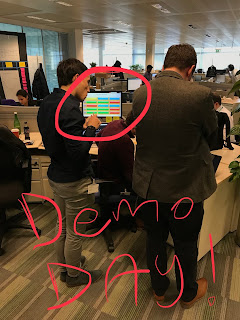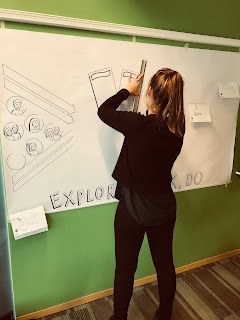This article is the final in a series taking readers on a journey to peek inside life in a Red Hat Open Innovation Labs residency.
This is the top-tier experience for any customer*, exposing them to open collaboration, open technologies, and fast agile application delivery methods.
This experience often escapes organizations attempting digital transformation, so through submersion in an Open Innovation Labs residency, Red Hat shares its experience in managing, developing, and delivering solutions with communities, open technologies, and open collaboration.
Join me as I share experiences from inside a real-life residency, watching Red Hat work intimately with a customer, exposing new ways of working, leveraging open technologies using fast, agile application delivery methods and open collaboration.
In the first part, I shared what’s in a Red Hat Open Innovation Labs residency. Then in part two, I looked at what I encountered as the residency progressed towards delivery. All that’s left now is to share the delivery week, known as Demo Day.
Delivering on the Promises
If you read part two already, then you know that the residency was divided into four weeks, with each of the weeks being segmented into sprints.

Trying to get the builds green for Demo Day!
These sprints were set up to support a promise made by the team, a promise that we delivered on each week with an internal team demonstration of the progress made on the product being developed.
The entire residency was also set up with an outcome defined by the team, which also had to be delivered at the end of the fourth and final sprint week. This last sprint worked towards delivering a final demonstration that normally targets not only the team itself, but also external business stakeholders.
We had three target outcomes for Demo Day:
- Demonstrate that we delivered the target business outcomes
- Show how we did it as a team using Agile, DevOps, TDD, and automation, and CI/CD.
- Convince the stakeholders to keep the product team together and to get other teams working in the same way.
In this case, the business stakeholders were spread across several global locations and time zones. This meant we held two separate demo presentations.
The first Demo Day was held on Thursday in a conference room including a rather nice video conferencing system with large screens showing each of the stakeholders located on the other side of the globe. Customer team members walked through the process and the sprints, and they showcased some of the achievements in the product showcase. Stakeholders could ask questions, make suggestions, and provide feedback during this demonstration.
Artist at work capturing the residency in images on a single poster.
The first Demo Day went off without a problem and the feedback was very encouraging. The process won over hearts and minds, and stakeholders left feeling like their team had done more in less time than ever before. The important part of this message was that the process, tools, and methodologies are now in place. These things stay with the customer, providing real potential to continue forward with the progress made on culture and change within the stakeholders’ team.
The final Demo Day included a special guest artist, Ellie from Inky Thinking, who was in the room to listen and do a live-capture of the process, sprints, and residency storyline. Above, you’ll notice an image showing Ellie capturing it all during the live Demo Day, and the image at the top of this post shows the final graphic Ellie produced.
The team was very happy to have finished their residency, learned to work in new ways, leveraged new processes, worked with new delivery methods and, above all, have a lot of fun delivering a desired business outcome.
Interested in more about the Open Innovation Labs?
If you missed the first two parts, rewind and catch up on part one in this series examining the residency process.
Last updated: February 6, 2024
